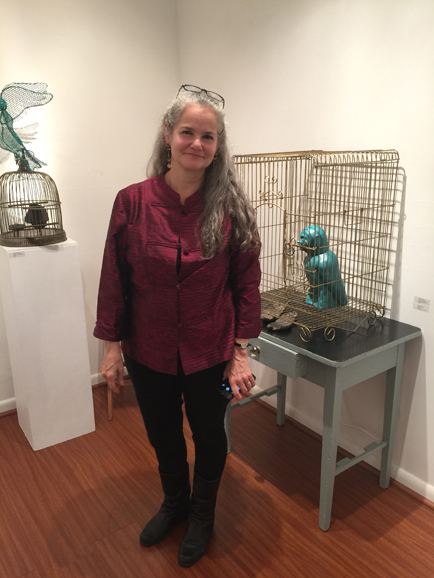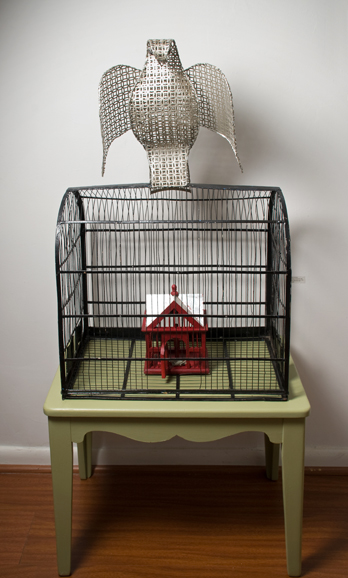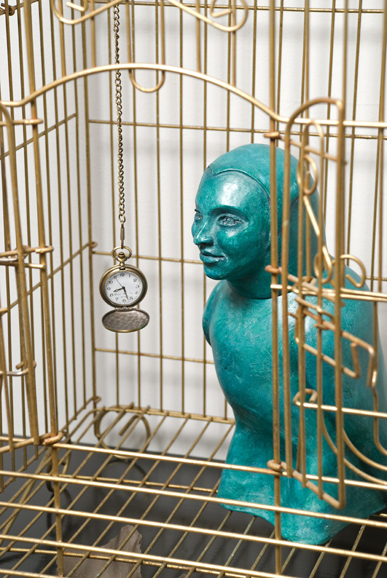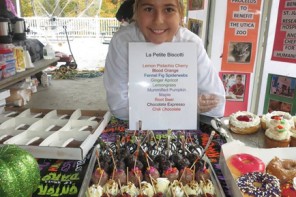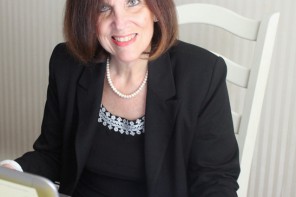Sculptor Sarah Haviland has always been passionate about nature and the feminine in nature.
In the 1990s, her superb goddess sculptures — such as “Kneeling Isis,” in which the abstracted figure’s mirrored “head” and raised “arms” allow the viewer to be one with the work — helped define the eco-feminist movement and brand the fledgling Peekskill Artist District as SoHo North.
Since then, the Cortlandt artist’s career has taken on an international dimension with an environmental installation in Taiwan. More recently and closer to home, she exhibited her bird-women at BAU Inc. (the Beacon Artist Union) under the title “Aviary: Votives & Voices.”
The installation represented her “ongoing work doing bird figures, human-bird combinations, which have a basis in mythology.”
From harpies, sirens and sphinxes in ancient Greece to the Germanic origins of “Swan Lake” and its modern variations in the film “Black Swan” and TV’s “Once Upon A Time,” birds are often associated with women who are tragic victims, predators or both. Does Haviland see that connection?
“I do, because I’m female,” she says with a laugh.
Her birds are like small, turquoise sphinxes perched in open cages or winged spirits alighting on closed ones. If birds symbolize, for Haviland and for us, flight, freedom, escape and the spirit world, then a cage can be a cruel confinement, albeit one with moss, stones and cinnamon sticks.
“The bird’s relationship to the cage is ambiguous,” she says. “A cage can be safe, too.”
These are accompanied by a soundtrack that melds birdsong and human voices in the manner of the Bird Market of Paris, which she calls an extraordinary place. Haviland collaborated on the soundtrack with her husband, Jonathan Blunk, a writer.
Birds were also the inspiration for an unusual project that took the artist to Asia this past spring. It almost didn’t happen.
“I heard about a residency in Taiwan with (curator) Jane Ingram Allen, but I teach art full time at the Borough of Manhattan Community College, which is part of CUNY, so I couldn’t apply. But then a new project came up with her, at the National Museum of Marine Science & Technology in Keelung, north of Taipei.”
The four-week residency, which included eight artists from around the world, drew on the themes of the ocean and sustainability. Haviland hit on the idea of the black kite, a seabird whose relationship to Taiwan is similar to that of the bald eagle to late-20th century America — symbolic and endangered. She would craft a “Black Kite Bench” that would stand on a bluff overlooking the coastline in an old fishing village within Keelung in what became known as the “25-day challenge.”
It was a challenge in more ways than one. Haviland was working not only with a wrist fracture sustained in Taiwan but with materials that were new for her. For all her love of nature, her career had been shaped by steel, mesh, concrete, found objects — the manmade world. Now she and her “crucial” volunteer assistants would be working with bamboo.
Haviland also had to reconcile herself to the idea that this work will disintegrate in time.
“As a sculptor, you’re trained to make things that will last,” she says. “It’s a mixed feeling but beautiful nonetheless.”
Haviland — who maintains a studio in Peekskill’s artistic Hat Factory and continues to exhibit with the 10-year-old Collaborative Concepts group on Saunders Farm in Garrison — says the Taiwan experience has only fired her for more public projects. (She has works in Pratt Institute Sculpture Park in Brooklyn and at NYU Langone Medical Center in Manhattan and Grounds for Sculpture in Hamilton Township, N.J.)
“I feel my work and imagery has a flow, a continuity….It’s deepened in the time I’ve been here (in Peekskill). It’s real, real life.”
For more, visit sarahhaviland.com.

